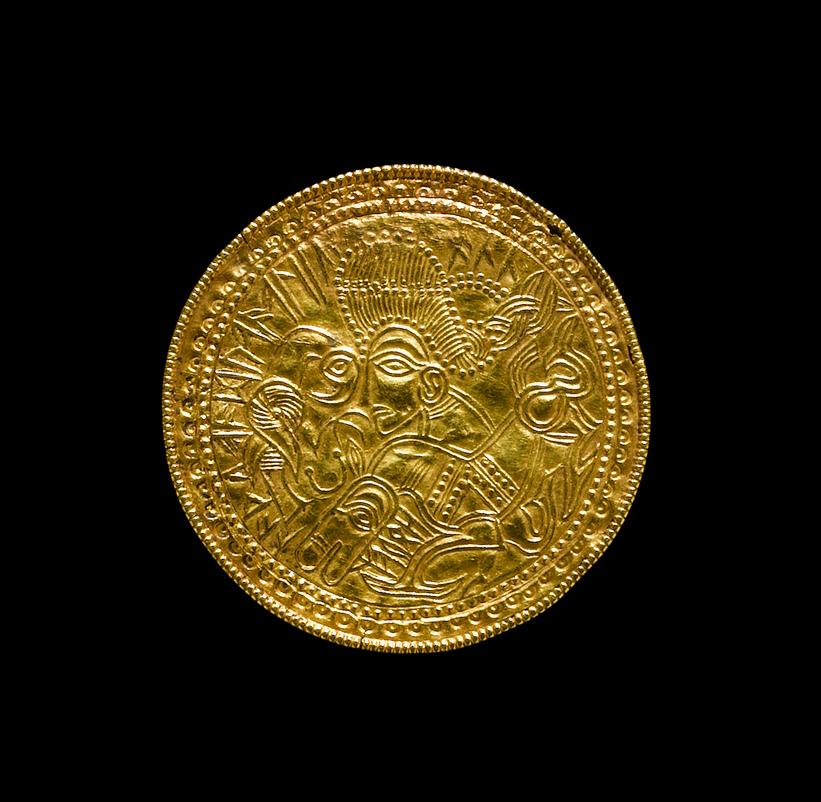Odin, Tor and the other Norse Gods
From written sources such as Snorri's Edda, other Edda poems and the Icelandic sagas, which was written down in the Middle Ages, we know the stories of Odin, Thor and the other Norse gods. In these sources, the monks, the Icelandic great men and bards, told about the Vikings' religion, the ancient Norse religion, which was cultivated before Christianity. It has long been discussed, how credible these sources where, as they tell of myths and rituals that took place hundreds of years before they were written down. Today, most agre that the stories are to be dated from about 1000 AD, but the core of the myth can be traced back to the 5th century AD or even longer.
The gold bracteates deliver the best proof of this. Here are some of the key scenes in the Norse mythology. One of the bracteate from Trollhättan in western Sweden represents the moment when the god Tyr gets his arm bitten of by the Fenris wolf. The brecteats from the location Black mold (Sorte Muld) on Bornholm and from Fakse on Zealand, illustrates Balder hit in the chest by the deadly arrow of mistletoe, while the man behind the attac, the treacherous Loki, and king of the gods, Odin, looks on.
The Norse gods Tyr, Odin, Tor and Frigg has given their name to the days of the week Tuesday, Wednesday, Thursday and Friday. The inspiration for naming the days after the gods may have come from the Romans in the time around 300 AD, when we in the Nordic countries had close contact with the Roman Empire. We also meet the gods names such as Odin, Thor and Tyr, and the fertility gods Frey, Freya and Njord, in the old landscape and city names such as Odense (Odin), Torsted (Tor), Tissø (Tyr’s lake), Frøslev and Frejlev (Frey / Freya).

